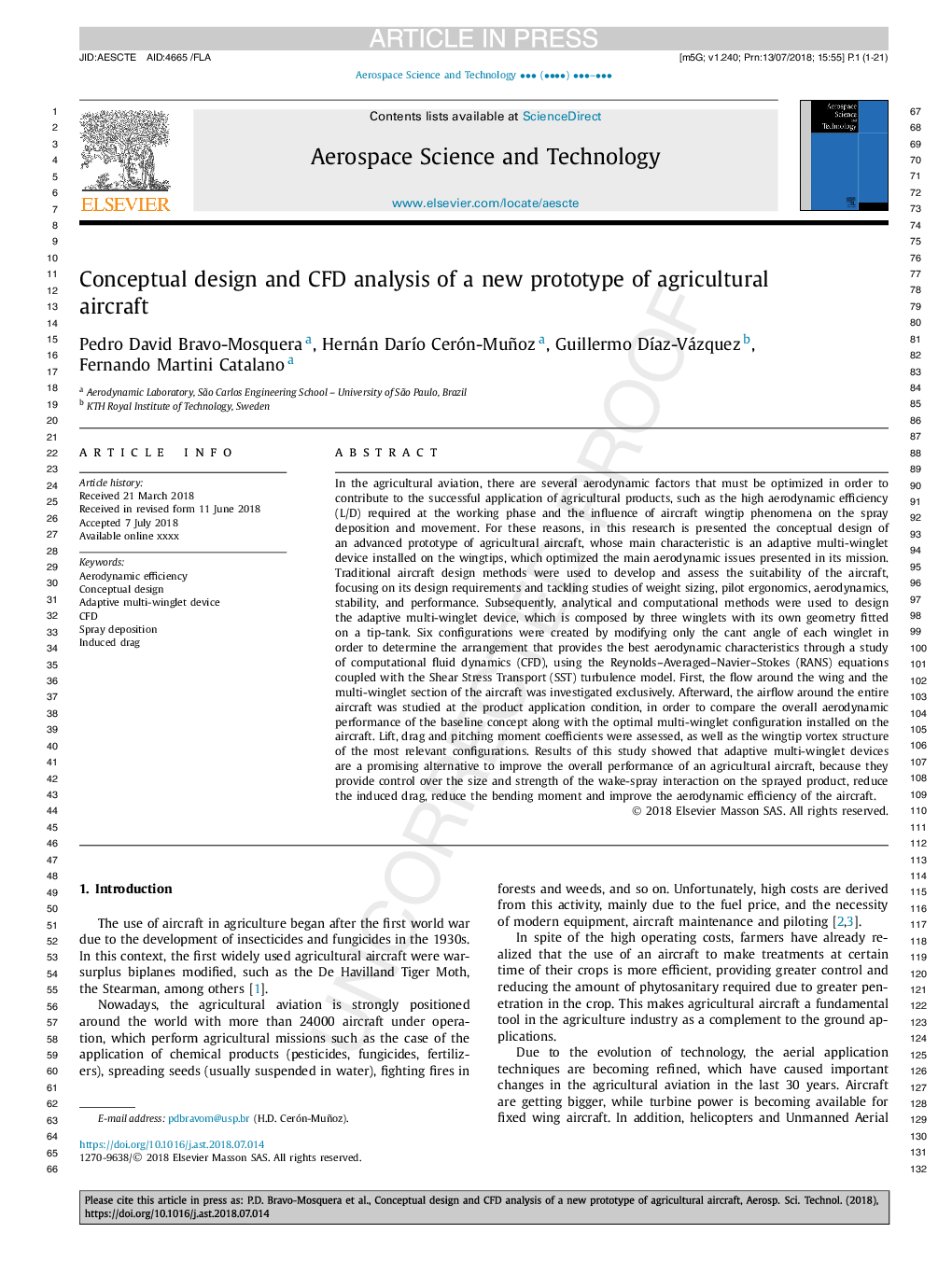| Article ID | Journal | Published Year | Pages | File Type |
|---|---|---|---|---|
| 8057237 | Aerospace Science and Technology | 2018 | 21 Pages |
Abstract
In the agricultural aviation, there are several aerodynamic factors that must be optimized in order to contribute to the successful application of agricultural products, such as the high aerodynamic efficiency (L/D) required at the working phase and the influence of aircraft wingtip phenomena on the spray deposition and movement. For these reasons, in this research is presented the conceptual design of an advanced prototype of agricultural aircraft, whose main characteristic is an adaptive multi-winglet device installed on the wingtips, which optimized the main aerodynamic issues presented in its mission. Traditional aircraft design methods were used to develop and assess the suitability of the aircraft, focusing on its design requirements and tackling studies of weight sizing, pilot ergonomics, aerodynamics, stability, and performance. Subsequently, analytical and computational methods were used to design the adaptive multi-winglet device, which is composed by three winglets with its own geometry fitted on a tip-tank. Six configurations were created by modifying only the cant angle of each winglet in order to determine the arrangement that provides the best aerodynamic characteristics through a study of computational fluid dynamics (CFD), using the Reynolds-Averaged-Navier-Stokes (RANS) equations coupled with the Shear Stress Transport (SST) turbulence model. First, the flow around the wing and the multi-winglet section of the aircraft was investigated exclusively. Afterward, the airflow around the entire aircraft was studied at the product application condition, in order to compare the overall aerodynamic performance of the baseline concept along with the optimal multi-winglet configuration installed on the aircraft. Lift, drag and pitching moment coefficients were assessed, as well as the wingtip vortex structure of the most relevant configurations. Results of this study showed that adaptive multi-winglet devices are a promising alternative to improve the overall performance of an agricultural aircraft, because they provide control over the size and strength of the wake-spray interaction on the sprayed product, reduce the induced drag, reduce the bending moment and improve the aerodynamic efficiency of the aircraft.
Related Topics
Physical Sciences and Engineering
Engineering
Aerospace Engineering
Authors
Pedro David Bravo-Mosquera, Hernán DarÃo Cerón-Muñoz, Guillermo DÃaz-Vázquez, Fernando Martini Catalano,
